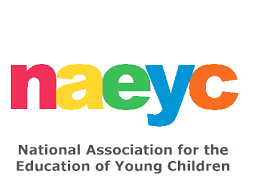
A frequent response to the suggestion that babies should be read to is, "But they won't understand what I'm reading!" That's exactly right - but consistently reading to babies as they grow WILL help them eventually understand what you are reading. In fact, reading is one of the best ways to help babies learn our language and be able to use it later on.
As a recent article in the National Association for the Education of Young Children (NAEYC, https://www.naeyc.org/), explained: "For years, researchers have shown that reading to infants is good for their language and cognitive development and is important for building children's vocabulary and prereading skills....Both the quality and quantity of shared reading in infancy are predictive of children's vocabulary, reading skills, and name-writing ability at age 4."
Here are some tips for reading to babies by the NAEYC:
- Make books readily accessible to both you and mobile babies by placing several baskets or trays of books on the floor in different locations.
- Make books part of daily routines, such as when lulling a baby to sleep or feeding a baby.
- Read aloud in a casual, conversational manner, pausing to point to the illustrations and label the objects and characters.
- Ask questions, even of preverbal children. Wait for children to respond in their own ways (facial expressions, body movements, sounds) before you start talking again.
- Talk to the children about the story - for example, "See the baby pat the bunny?"
- Use an animated voice when reading to babies. This is a good way to show that you're interested and you enjoy reading! If you're engaged, babies will be too.
- Help children learn to turn the pages of a book. Starting at about 9 months old, babies can pick up small objects with the pointer finger and thumb, which aids them in beginning to grip and turn pages.
- Read for as long as the child is interested. It's fine not to finish the book.
- Laura Raphael, Children's Services Coordinator